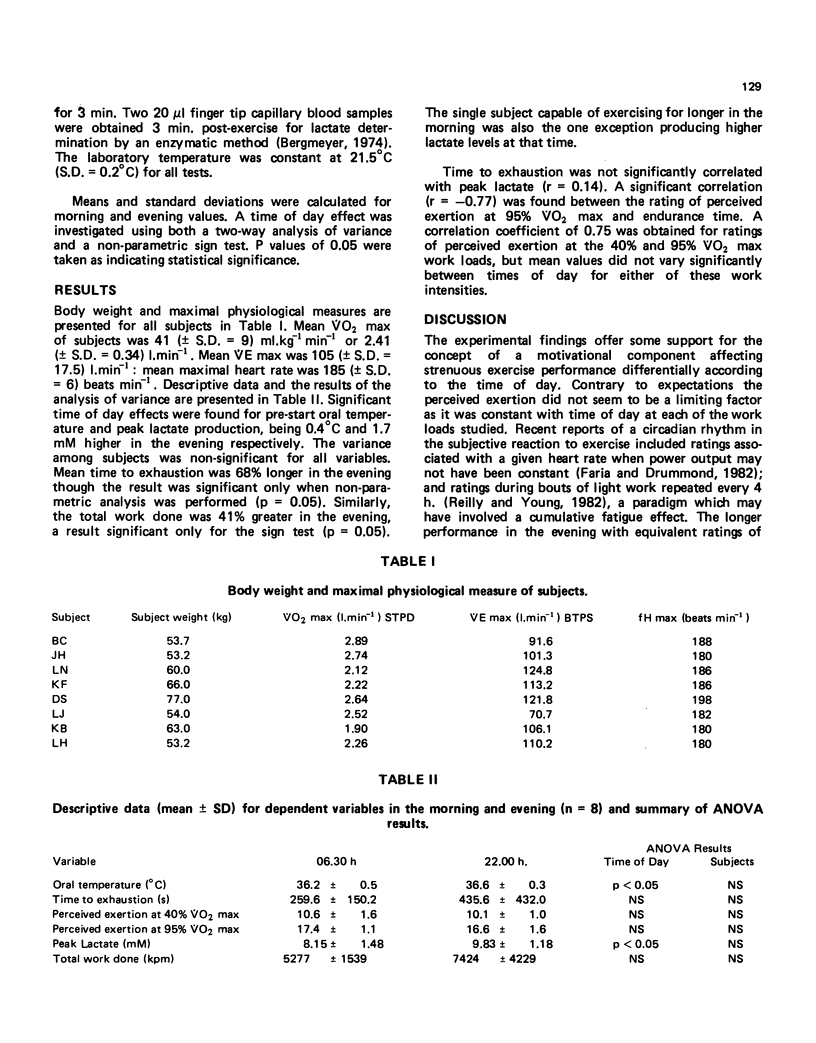Abstract
The circadian cycle in all-out competitive performance may be due to changes in motivational drive to tolerate strenuous exercise rather than to rhythms in maximal physiological functions. This experiment explored the hypothesis that a fixed relative loading of high intensity aerobic effort could be sustained for longer in the evening compared with the morning. Eight females cycled to exhaustion at 95% VO2 max at 06.30 h. and at 22.00 h. after a 5 min, moderate load of 40% VO2 max. Oral temperature was 0.4 degrees C higher at 22.00 h. compared with the earlier time. Perceived exertion showed no significant effect of time of day at either work load but exercise tolerance time, total work done and peak lactate production were significantly greater at 22.00 h. (p = 0.05). Perceived exertion at the high load was significantly related to endurance time (r = -0.77) and to the rating at the low work level (r = 0.75). Peak lactate was not significantly correlated with the time to exhaustion (p less than 0.05). It was concluded that superior exercise performance in the evening may be attributed to a greater tolerance for high intensity exercise which is closely associated with the acrophase in body temperature.
Full text
PDF


Selected References
These references are in PubMed. This may not be the complete list of references from this article.
- Borg G. Perceived exertion as an indicator of somatic stress. Scand J Rehabil Med. 1970;2(2):92–98. [PubMed] [Google Scholar]
- Faria I. E., Drummond B. J. Circadian changes in resting heart rate and body temperature, maximal oxygen consumption and perceived exertion. Ergonomics. 1982 May;25(5):381–386. doi: 10.1080/00140138208925004. [DOI] [PubMed] [Google Scholar]
- Reilly T., Brooks G. A. Investigation of circadian rhythms in metabolic responses to exercise. Ergonomics. 1982 Nov;25(11):1093–1107. doi: 10.1080/00140138208925067. [DOI] [PubMed] [Google Scholar]
- Wasserman K., Whipp B. J., Koyl S. N., Beaver W. L. Anaerobic threshold and respiratory gas exchange during exercise. J Appl Physiol. 1973 Aug;35(2):236–243. doi: 10.1152/jappl.1973.35.2.236. [DOI] [PubMed] [Google Scholar]


